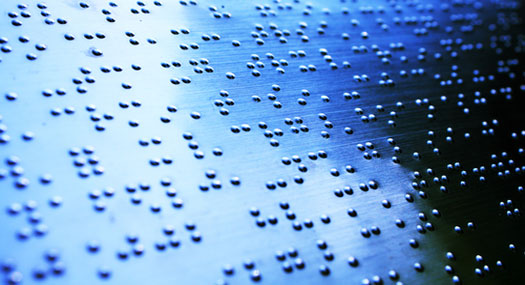Literacy—the ability to read and write—is vital to a successful education, career, and quality of life in today's world. Whether in the form of curling up with a good book, jotting down a phone number, making a shopping list, or using a computer to write a report, being literate means participating effectively at home and in society.
Although learning to read and write in traditional ways may not be possible when you cannot see print on a page, there are many other paths to becoming literate. Learning to read and write in braille can make a dramatic difference in the life of a visually impaired child or adult. Braille is an irreplaceable and modern method for literacy.
When you first touch something written in braille, it will probably feel like a jumble of dots. However, like any other code, braille is based on a logical system. Once you understand it, you'll be able to read and write braille easily. That's because braille is not a language, it's just another way to read and write English—or any other language, such as Japanese. Learn more in this section of the AFB website, and if you have children or students, be sure to explore the Braille Bug®, too.
There are many tools available for enhancing vision for reading print, and for accessing braille and electronic materials. Learning to use devices like magnifiers and computers equipped with software that simulates a human voice, or portable electronic braille devices can also open up the world of literacy for someone with a visual impairment. You can learn more about that in the Reading and Writing section of this site.
